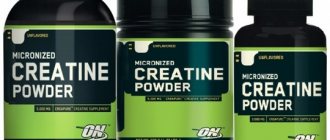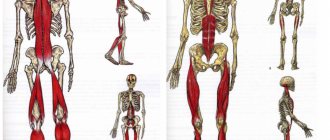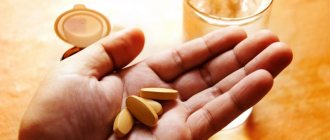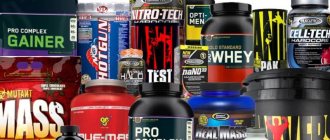Creatine is a substance that is a source of energy for muscles. It is used to produce a safe food supplement for athletes. To increase the effectiveness of your workouts and gym activities, it is recommended to take creatine to avoid muscle wasting and cope with increased physical activity.
What is creatine
Creatine is a nitrogen-containing carboxylic acid that is produced by the human liver and pancreas during the breakdown of the amino acids arginine, methionine and glycine. Muscle creatine, synthesized by the body, is involved in energy metabolic processes in cells. The daily human diet contains about 2-3 grams of creatine.
Professional athletes and people with high physical activity who are building muscle mass need to take creatine in higher dosages to start the process of gaining muscle mass. The substance is contained in some protein products, but it is difficult to create a daily diet taking into account its required amount, since you will have to eat several kilograms of protein products to replenish the norm.
Creatine is present in the body of every person, mainly in the muscles. It comes from eating meat, fish and dairy products and is a natural energy booster during intense strength training. Under the influence of metabolic processes, it releases creatine phosphate, which becomes a direct source of energy. When it breaks down, water is formed, which promotes the growth of muscle tissue.
To stimulate metabolic processes, accelerate fat burning and accumulate muscle mass, it is recommended to take creatine as a supplement to the main diet. If its level decreases during training, that is, the entire energy reserve is used up, the athlete will not be able to complete the planned approaches. Therefore, it is recommended to add creatine to sports nutrition and take a cocktail containing powder with you to training or take the drug in tablets.
On a note!
The daily requirement of creatine for an athlete is contained in 3 kilograms of salmon or beef.
what is creatine for?
Origin
The substance was discovered in 1892 by the French scientist Michel Eugene Chevreul. As a result of his research, he isolated a new meat ingredient called creatine from the Greek word “kreas” - meat. His discovery was confirmed by the German scientist Justus von Liebig, who established that the substance is a permanent component of meat. Over the following years, Liebig Fleisch Extract was produced as the main source of the drug.
Is it worth mixing substances?
The combination of two foods in the diet is an important basis for gaining muscle mass. Creatine provides muscle fibers with energy for high-quality transport of nutrients, and protein supports recovery processes.
The key rule for using different sports supplements is to take into account the rules of their interaction. Protein and creatine are most effective when mixed into a post-workout shake. They do not interfere with each other’s actions; rather, on the contrary, they complement and enhance the effect. This combination will allow creatine to be absorbed faster and charge the muscles with the necessary energy reserve for the recovery process.
Labrada Nutrition, Creatine Muscle Gainer, Vanilla, 2722 g
Price – ₽3,194.24
Buy from a partner
How does it work
To continually contract during exercise, muscles need adenosine triphosphate, or ATP for short. During metabolic processes, it is broken down into phosphate acid and adenosine diphosphate or AP. In order for a substance to provide energy, it needs to react with creatine phosphate CP to form ATP. In simple terms, taking creatine triggers the breakdown of adenosine triphosphate, resulting in the body having energy to perform physical activity.
When an athlete trains hard, the reserves of CP and ATP are quickly depleted, resulting in fatigue when their levels decrease. You need creatine regularly to replenish your strength and finish an intense workout.
What does creatine provide for strength sports?
The drug helps to achieve many times better results than without its use. All bodybuilders know very well what creatine does for strength training and other sports:
- increase in strength indicators;
- muscle mass growth;
- muscle definition due to muscle hydration;
- increasing testosterone levels in men;
- breakdown of lactic acid.
The effect of taking it becomes noticeable after two weeks, when the drug accumulates in the body and starts metabolic processes. The benefit of creatine lies in its effect on muscle growth. During training, there comes a period of decreased growth, familiar to many athletes. The drug accumulates and stimulates metabolism, literally causing muscles to work. It neutralizes acids that appear as a result of intense exercise and lead to exhaustion and fatigue.
creatine sports nutrition
Keratin for hair at home
The molecules that make up keratin do not have a large volume. It is not difficult for them to penetrate the hair structure through external damage. Due to this, they become stronger, softer and have an excellent appearance.
Read also: Shilajit for hair in shampoo - for growth and strengthening
The body is unable to influence the health of trunks and regrown hair. Keratin is a real find.
Thanks to procedures using keratin, you can achieve beautiful hair without sacrificing its length.
But despite all the positive effects of keratin, it cannot be called an ideal hair restorer. Keratin molecules were foreign and did not interact with the internal structure of the hair.
As a result, after washing, the hair loses precious molecules and gradually returns to its original state. You need to constantly visit the salon.
Often the period between visits to the master is no more than three months. A mask with creatine is not a universal remedy against the imperfections of damaged strands. A detailed video of keratin hair restoration at home is presented, taking into account all the nuances.
Therapeutic and cosmetic effects of keratin
Forms of release of creatine
Like most sports supplements, the drug has various forms of release, which differ in composition, manufacturer, purpose and quality. Debates about which one is better for beginners and which one is more effective with constant use are conducted regularly.
Depending on the purpose, the drug is available in the following forms:
- regular tablets;
- effervescent tablets;
- liquid;
- chewing;
- capsules;
- powder.
The most convenient is creatine in capsules, containing 99.5% of the active substance. It is least susceptible to decay, is quickly absorbed and gives an almost instant effect. However, this is the most expensive form of the drug, so most novice bodybuilders choose powdered forms of creatine.
The powder is inexpensive and easy to consume at any time by adding it to a cocktail. It gives the best effect in combination with proteins, gainer and liquid.
The liquid drug and soluble tablets are quickly absorbed into the walls of the stomach. There is a claim that their effect is reduced due to the fact that the active substance does not reach the muscles in full.
The release form and type of drug are selected individually. Creatine in tablets and capsules is more convenient to take; powder is suitable for those who combine it with protein shakes.
How to combine and properly consume sports nutrition
When purchasing sports nutrition, many athletes have a question about how to properly and at what time to consume protein, gainer, creatine or BCAA in order to get the maximum effect from training in the future. In this article, we will point out the main recommendations that should be taken into account when consuming sports nutrition throughout the day.
Protein
It is advisable to mix various proteins with milk. If milk is poorly digestible, then it should be mixed with regular drinking water. You can drink protein in the morning, at night, between meals and after training, depending on the type of protein and your goals.
Gainer
The gainer is also mixed with milk or water. Gainer must be drunk after training, as well as between meals and in the morning. Consuming weight gainers at night can lead to unwanted fat growth. The amount of gainer should be calculated based on how many calories you need to get per day.
Creatine
Contrary to the statements of some manufacturers that creatine should be taken with food or protein, creatine is best consumed separately and in its own form, i.e. not as part of a protein or gainer, but in a separate form or together with the transport system. Creatine in its own form or with the transport system is absorbed much better! It is better to drink creatine separately between meals, stirring it in grape juice, 5 grams of creatine per 1 glass of juice. If creatine comes with a transport system, usually a mixture of carbohydrates, then creatine can be mixed in water, since the carbohydrates that come with creatine will replace grape juice. Creatine is drunk separately from everything else so that during the digestion process it does not collapse and turn into a useless product; the transport system and grape juice are used for the same.
Amino acids
Amino acids can be drunk with water, juice, any liquid, both in the morning and during the day, and between meals, and at night, as well as with food, before eating food and after, i.e. at any time, they will be learned always and at any time.
BCAAs
It is better to drink BCAA or BCA before, during and after training; this is the ideal time to consume BCA with water, juice or any other liquid. You can drink them with food, protein, or just about anything. For the effect of BCAA to be felt, you need to drink about 5 grams at one time. In general, they are consumed from 5 to 20 grams at a time. Naturally, 1 gram of BCA will have an effect, but not what you expect from them.
Glutamine
A very delicate and unstable amino acid, glutamine must be mixed in water and drunk immediately. It is best to drink glutamine separately between meals or in the morning and at night, but you can also mix it with protein or gainer or regular food. The dosage of glutamine should be from 5 to 20 grams, since most of it is destroyed in the stomach without ever entering the blood.
Vitamins, minerals
Vitamins can be taken with water at any time of the day, but preferably with food, either immediately before a meal or immediately after a meal, since with food they irritate the stomach less and are better absorbed. Dosages of vitamins must be looked at depending on the manufacturer and adhere to the manufacturers' instructions.
Fat burners
Fat burners should be taken with water, in accordance with the manufacturer's instructions, or half an hour before training.
L-carnitine
As a strengthening agent, you can drink L-carnitine at any time of the day, with water or with food. As a fat burner, you should drink it 30 minutes before training, starting with a dosage of 1 gram and, depending on your feelings, gradually increasing it. Typically, L-carnitine is already felt well at a dosage of 1-3 grams.
Pre-workout supplements
It is necessary to drink 15-45 minutes before training, stirring in water or juice. Pre-workout complexes must be taken on an empty stomach, i.e. Before using a pre-workout complex, you should not eat for at least 1 hour, but preferably 2, since the ingredients included in the complexes are destroyed in the stomach and the complex no longer works as it should.
L-arginine or nitric oxide
Drink before training on an empty stomach, just like a pre-workout complex, or in the morning immediately after sleep, and start eating half an hour after taking L-arginine so that it has time to be absorbed. L-arginine is very delicate and easily destroyed, hence the need to take it on an empty stomach.
Products for joints and ligaments
Drink in the dosage recommended by the manufacturer at any time of the day.
Types of Creatine
The drug contains several types of creatine, each of which has certain properties.
Monohydrate
The most common type of additive. Its effectiveness has been proven by numerous studies; the drug is regularly taken by thousands of athletes who show excellent results after use. It has the optimal combination of price and quality, which makes the product popular. Does not contain chemical additives and is available in tablets, capsules and powder.
Anhydrous
This is creatine separated from water molecules. It contains 6% more active ingredient. It has similar properties to monohydrate and is used as a complete substitute for the most popular type of drug. It is at the research stage and has a high potential to become a popular tool after research is completed.
Citrate
Consists of molecules of creatine and citric acid. According to research, this combination can give your muscles more energy. The drug is under development and has similar properties to monohydrate, superior to it in the speed of absorption when taken with liquids;
Phosphate
It has a composition that contains creatine in the body. Neutralizes lactic acid, which causes fatigue and muscle tremors. The drug showed good results in reducing the cost of folic acid and vitamin B12.
Malate
Tri-Creatine Malate is a form of the drug that consists of molecules of creatine and malic acid, divided into tricreatine and dicreatine. It dissolves quickly in water and has a sour taste. Mostly available in powder. The sports supplement is taken with water; it has a high absorption rate due to its small particles.
Tartrate
A type of preparation for the production of effervescent and regular tablets, chewing strips and bars. Contains tartaric acid, retains beneficial properties exclusively in solid form. The drug is highly soluble in water and has similar properties to monohydrate.
Magnesium
The combination of magnesium and creatine molecules promotes better absorption of the drug and the release of phosphates. Research has proven that regular intake of magnesium creatine makes muscles more hydrated and increases their strength. It has a high rate of delivery of the active substance to muscle fibers, other properties are being studied.
Glutamine-taurine
Combination of the main drug with the peptide glutamine and taurine. This combination is absorbed faster by the body's cells and is retained in the muscles longer, increasing their strength.
GMB/HMB
Hydroxymethylbutyrate is an organic acid that is formed due to the breakdown of the amino acid leucine. During intense training, its destruction occurs; taking the drug stops the process of tissue structure destruction. The daily norm is observed if the diet is rich in citrus fruits, fruits and fatty fish.
Important!
It is prohibited to use hydroxymethylbutyrate in combination with hydroxybutyrate - this is a sedative that suppresses the reactions of the central nervous system.
Ethyl ether
The drug does not contain sugar and is available in tablets, capsules and powder. It is converted into pure creatine in the body and promotes rapid muscle gain. The additive is being studied and in the future may replace many other types due to the concentration of beneficial properties.
titrate
The additive has similar properties to effervescent tablets. It dissolves quickly in water, theoretically it helps the absorption of creatine, but confirmation of this property has not yet been found.
Crealkalin
Kre-Alkalyn is a buffered product, a mixture of creatine and alkali molecules. Under the influence of metabolic processes it turns into the form of creatinine. It has no side effects, does not cause flatulence, dyspepsia or dehydration.
Nitrate
Compound with nitric oxide, used to increase strength and muscle growth. It is being studied for its effect on the body and has no contraindications, which makes it more popular every year.
α-ketoglutarate
Ketoacid is involved in aerobic metabolism and is an anti-catabolic drug after surgery. The effect on improving exercise performance has not been studied.
Hydrochloride
Another name for the conjugate version is the unique Con-Cret product without side effects. It has a low dosage due to the high concentration of the active substance, and occupies the first position in the ranking of types of creatine.
Peptides
Substances whose molecules contain α-amino acid residues linked into a chain by peptide bonds. The product is used by athletes to correct physical performance during training. The drug has ceased to be popular because it does not provide a sustainable effect.
Phosphocreatine solution
A cardioprotector that improves myocardial metabolism and promotes blood microcirculation. Recommended for use in sports to prevent the development of physical overstrain syndrome under extreme stress.
What is needed for keratin restoration?
Keratin is the building material of hair.
It is impossible to prepare keratinizing compositions at home due to the lack of commercially available keratin substances. But on the shelves of cosmetic stores there are a wide range of keratin treatment products from different manufacturers: European and American.
Read also: How to care for problem hair
Keratin complexes consist of: a keratin product containing at least 40% keratin, a moisturizing shampoo with keratin, a conditioner serum with keratin, a corrective mask with keratin, a restorer, for the first procedure, you will only need the product, shampoo and serum, and for subsequent care, a mask, restorer, shampoo and air conditioner. Important: When purchasing a complex, you need to pay attention to the composition of the preparation for keratization.
Exceeding the amount of formaldehyde by more than 2% is fraught with dangerous diseases, and if the keratin concentration is less than 40%, the effect of treatment and regeneration will be minimal. The less keratin in the product, the more formaldehydes it contains, which have a detrimental effect on the hair during the procedure and the entire body during evaporation.
You also need to stock up on an iron with titanium coating, a temperature sensor and uniform heating of both thermal plates. High-quality smoothing and good gliding of the iron through the hair depends precisely on the coating: titanium plates have shown themselves to be the best. The maximum temperature to which the iron should be heated during the procedure is 230 degrees. Stages of keratization at home
Hair restoration with keratin is an expensive procedure that can be reduced in cost by doing it at home. The purchased set of products will be enough for 4 to 8 events - it depends on the length and thickness of the hair.
For keratin treatment to be successful, it is necessary to complete 3 steps:
1.Cleansing.
Hair is washed 2 times with keratin shampoo and dried naturally.
2.Treatment.
A keratin product is applied to damp hair. To do this, you need to divide all the hair into even thin strands, pin the upper curls with hairpins so as not to interfere, and, starting with the lower strands, spray keratin at a distance of 1 - 1.5 cm from the roots of the hair along the entire length. After spraying, immediately comb it through so that the liquid is better distributed and absorbed. After processing all the hair and leaving it for 15 minutes, you need to dry the strands with a hairdryer with cold air.
3.Consolidation.
The longest and most important stage begins with heating the titanium iron to 230 degrees. Then the distributed thin strands in the order of application are ironed 5 times on each curl. Thus, the product is evenly sealed into each hair, enveloping it with a protective layer. After straightening the entire head of hair, a thin layer of fortified serum with kerotene is sprayed onto the hair, which adds shine to the hair. The process can last from 2 to 6 hours, which is tiring for an unprepared person, so you should immediately enlist the help of a friend or sister.
Read also: Mayonnaise hair masks
How to take creatine
It is recommended to drink creatine in the morning, immediately after waking up, when insulin levels are high and the absorption of amino acids will be fast and complete. For proper administration, the form of release of the drug does not matter, the main thing is to comply with the dosage. Tablets, capsules or creatine powder have the same effect on the body. There are two methods of using the drug - with loading and without loading.
Loading is taking creatine monohydrate during the first week in increased doses for a cumulative effect. Then the dosage is gradually reduced and taken at the usual daily rate. This gives better training results and starts metabolic processes, muscles work more actively and get tired less.
The scheme is simple:
- 25 grams of powder per day for the first 7 days, dividing them into 5 doses of 5 grams;
- 10 grams of creatine over the next 7 weeks.
With or without loading, you need to take creatine powder or capsules before your morning workout or an hour after finishing your gym session. If you do not play sports and need the drug for physical activity, before use you need to eat something sweet - a couple of chocolates, marshmallows, or drink very sweet tea. This will increase the level of the hormone insulin and promote rapid absorption of the supplement.
On a note!
Experts recommend drinking creatine in powder, as it is absorbed faster.
Optimal dose
The optimal daily dose of creatine with constant use is 10 – 12 grams. It can be divided into two times: before the morning workout and before the evening jog or other type of physical activity. The course of administration is 8 weeks, after which it is necessary to take a break for 1 month and repeat at the indicated dosage. A break is necessary to return the muscles to sensitivity to the supplement.
Tablets and capsules indicate the dosage of the active substance, which does not require precise dosage measurement. If you take creatine powder, you should measure it with a level teaspoon, which corresponds to 5 grams of the drug.
It is not recommended to exceed the dosage and take more than 30 grams per day, since muscle mass is not able to retain more of the substance.
Reception features
The main problem is that not everyone knows how to take creatine correctly. There are many assumptions and theories that confuse the athlete more than simplify his task. Let's look at the main subtleties of the technique:
- Dosage is one of the most important points when it comes to taking sports nutrition. There are two main approaches here:
- with loading. In this case, the daily dosage is 20-30 grams of the substance, which are taken in 4-6 approaches. The duration of this course is 5-6 days. This is followed by a maintenance period, when the dosage is reduced to 3-5 grams per day. Number of doses: once a day. The course of support is another 24-26 days.
without downloading. Here the daily dosage is 5-7 grams. Take creatine once a day. Course – 60 days.
- What to drink with it? There is a lot of discussion about this. Creatine is a very useful substance, but it still needs to be delivered to its destination. And this requires a special “transport” - insulin. This hormone has a powerful anabolic effect - it promotes maximum absorption of creatine by muscle fibers. Therefore, to improve effectiveness, it is better to take creatine with sweet juice or warm water with sugar. A sweet drink can speed up the production of insulin and improve the absorption of this much-needed substance. From juices it is better to take orange, apple or grape. In addition, experts recommend combining the supplement with fast protein or amino acids. Naturally, it is inconvenient to drink creatine with special mixtures. But this is not necessary. It is enough to drink them at approximately the same time. Many athletes are interested in whether it is possible to take this supplement with milk. But here you should not be confused. Protein is usually taken with milk. In this case, you can really achieve better digestibility of proteins and get maximum results from your workouts. As for creatine, taking it with milk can complicate the process. We must not forget that this product contains lactose, which not every stomach can digest. It also contains a slow protein – casein, which interferes with the normal absorption of the supplement. Therefore, there is no need to take creatine with milk. And why, if today there are no problems with choosing and purchasing juice.
- When should I take it? So, we solved the issue with milk and juice. Let's discuss when is the best time to take creatine - before you start exercising or after you finish it. Here the opinions of athletes differ, but we will proceed from research results and real facts. It has already been proven that the greatest effect can be achieved if you drink the substance after exercise - after 50-60 minutes. Why is that? There are several reasons. For example, taking a supplement before starting exercise can cause dehydration, which can be very dangerous during exercise. We must not forget that before training the body is not yet “warmed up”, and metabolic processes proceed too slowly. In such a situation, creatine may not get to its destination - muscle cells. But that's not all. As a rule, before and during exercise, the body has enough existing reserves of the substance. A deficiency may occur after the training process is completed. Experiments have shown that you should not drink nitrogen-containing acid during training. This can only cause harm and complicate the performance of a number of exercises. Let's also not forget about the dangers of dehydration. What's the point of taking the risk and translating the product? Drink creatine after exercise, about 50-60 minutes later, and get maximum results.
- Can it be combined with food? Again, opinions differ here. Some believe that it is better to drink creatine on an empty stomach, while others are confident that the presence of food and an acidic environment in the gastrointestinal tract does not affect the absorption of the substance. What to believe? Studies have shown that the presence of food in the stomach does not in any way affect the quality and completeness of absorption of the supplement. So there are no special recommendations in this regard.
What is the best way to combine creatine intake?
The drug can be combined with other supplements - gainers or protein shakes. If you are in a drying period, it is recommended to add L-carnitine, an effective fat burner, to the drink.
In order for creatine to be absorbed, insulin levels must be raised. You can dilute the powder in juice and drink it with cake, fruit jelly, banana or other sweet fruit.
It is best to dissolve the powder in sweet citrus juice with a capsule or tablet. While taking the drug, you must drink 3 liters of water per day, excluding soups, juices, tea and other drinks.
Creatine safety
Creatine has been studied much better by scientists than most other sports supplements. This is an amino acid that is produced in our body and is not foreign to it. The natural substance is consumed daily by those who love red meat and fatty fish, especially herring.
Athletes take it to withstand physical activity and train in the gym for several hours. Creatine replaces large amounts of meat or fish. If an athlete could eat 3 kilograms of meat before training, he would not take the drug. But this is physically impossible, so scientists isolated a natural substance from products and made a means for administration. It is completely safe and does not harm health, as it is a 100% natural meal replacement for heavyweights and athletes.
In the early 1990s, it was found that taking creatine as a dietary supplement improves athletic performance. 1992 Olympic champion sprinters Linford Christie and Sally Gunnell took creatine before competition. As a result of numerous studies, it has been found that an effective sports supplement is absolutely harmless.
On a note!
The drug is approved for use by the International Olympic Committee of the IOC and many sports federations, which is a guarantee of its safety.
Harm of creatine
The combination of creatine with sweet foods to speed up metabolism can cause a sharp drop in blood sugar levels in people with diabetes or hypoglycemia. Patients taking supplements to regulate glucose in the body must consult with their doctor about taking creatine.
Caution when using the supplement must be observed for the following diseases:
- stones in the kidneys;
- liver diseases;
- arrhythmia;
- problems with the gastrointestinal tract;
- mental disorders;
- migraine;
- deep vein thrombosis;
- imbalance of electrolytes in the blood;
- undergoing chemotherapy;
- bipolar disorder;
- skin diseases;
- neuromuscular disorders.
When taking medications to increase blood pressure, you should drink creatine with caution and not exceed the recommended daily intake.
Important!
It is forbidden to drink creatine while taking antidepressants, diuretics, non-steroidal anti-inflammatory substances and coffee.
Myths about creatine
The more popular a drug becomes, the more rumors appear about its harm. It's time to debunk some of the most persistent myths about creatine.
Myth 1 – disrupts the functioning of the liver and kidneys
The drug has been actively taken by athletes since 1991, and during this time numerous studies conducted by independent specialists have refuted this statement. Creatine does not change the lipid composition of the blood, it is harmful only to people with kidney failure, everyone else can take it in accordance with the specified norm.
Myth 2 – causes rhabdomyolysis
Such information appeared after the publication in the New York Times of a note that the national football team was diagnosed with rhabdomyolysis, or a disorder of the structure of skeletal muscles. Studies have shown that athletes did not consume creatine, and the onset of the disease was influenced by training in hot, humid conditions.
Myth 3 – disrupts the functioning of the gastrointestinal tract
About 5% of those taking the drug experienced minor discomfort. Individual intolerance to the substance on an empty stomach has been established; no negative consequences were found when taking the supplement again after breakfast.
Myth 4 – leads to dehydration and cramps
Creatine, on the contrary, increases the amount of water in the body as a result of metabolic processes and maintains the necessary level of hydration.
Expert opinion
Experts agree: creatine is the most effective sports supplement for increasing physical activity. It is completely natural, safe and, subject to all rules of administration, has a general healing effect on the body.
A study was conducted in which scientists found that there are people who do not respond to the active ingredient of the drug. These are athletes with a lot of weight at the cutting stage, for whom the recommended dosage is insignificant. With a decrease in body weight, the level of creatine in the body returns to normal and taking the drug becomes effective.
muscle creatine










